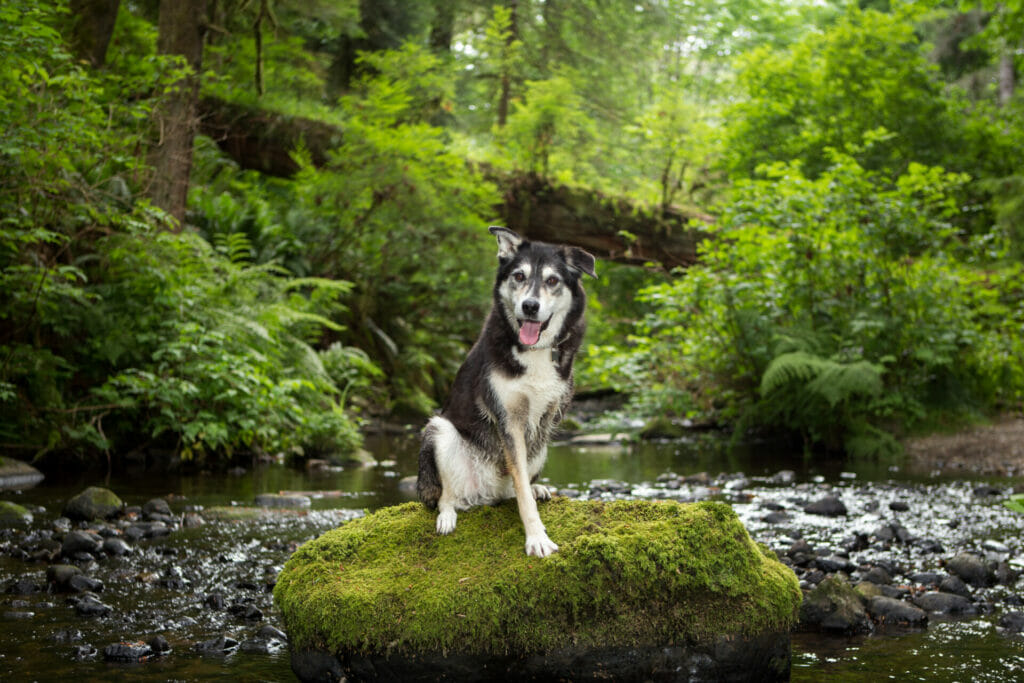Do you have a three-legged dog or a dog with an upcoming medical procedure that will result in an amputation? Three-legged dogs, or tripods, generally adjust to their new lives well. Although tripods often do very well, there are some considerations to keep in mind to help them to adjust to their new body.
Why Do Dogs Become Tripods?
Dogs can become tripods or only have three legs for various reasons. Some dogs have a leg surgically amputated because of a physical deformity that makes the leg unusable. Other dogs need to have an amputation as part of treatment for cancer. Dogs can also lose a leg in a traumatic event like being hit by a car. In these cases, amputation is the best, most accessible, and most humane option for helping a dog to heal and get back on their feet.
How Dogs Adjust:
Dogs are individuals, and each dog will respond differently to having a leg amputated. In general, young and otherwise healthy dogs tend to adapt and adjust very quickly to having three legs instead of four. In particular, dogs who lose a rear leg adapt remarkably well to their new body and are often quite agile in their movements. However, many dogs also adapt well to the loss of a front leg. In many cases, dog owners struggle the most with adapting to their dog’s new body, and dogs adapt relatively easily.

Activity Restrictions?
Each dog is an individual, and their health needs will be unique. Some three-legged dogs won’t have any activity restrictions and can even cautiously participate in higher-impact activities like dog agility. In other cases, a three-legged dog might have other health conditions limiting the amount of exercise or type of exercise dogs can participate in. Talk with your dog’s veterinarian to discuss what activities are appropriate for your three-legged dog now and in the future.
It can also be beneficial to schedule an appointment with a veterinary physical therapist for your dog’s evaluation. A veterinary physical therapist may prescribe limited or ongoing physical therapy for your dog to ensure they’re using their other three legs as well as possible. Your dog’s vet will also be able to help you understand how to look for signs that your dog is becoming fatigued or needs a break while being active in the future.
Safety Considerations at Home:
Although many three-legged dogs have no movement limitations, some will struggle with specific movements. Dogs with three legs may struggle more with mobility immediately or later in life, especially if they develop arthritis as they become seniors. Always work with your dog’s veterinarian to assess your dog’s movement regularly. You can also make modifications in your home to help your dog move more comfortably around the house; for some three-legged dogs, having raised water and food bowls can help with balance during mealtimes.

You may also want to add carpets and carpet runners throughout your house if you have hardwood or tile floors. Dogs with three legs may have more difficulty getting up and down or can more easily slip on hard floors. Carpets can provide traction for your dog, preventing uncomfortable slipping that can lead to injuries. You will also want to add baby gates or other barriers in your house to prevent your dog from attempting the stairs on their own. In some cases, a dog can’t navigate stairs safely, and in other cases, they may need support going up and down. Talk with your dog’s vet or veterinary physical therapist about how to help your three-legged dog navigate stairs.
Fitness Routines:
For dogs with three legs, overall fitness and health is something dog owners will want to focus on. Making sure that tripod dogs are a healthy weight is especially important. Extra weight can put unnecessary strain on your dog’s joints. Because three-legged dogs already have increased pressure on their joints, keeping their weight down and ensuring they are as physically fit as possible. Talk with your dog’s veterinarian about a healthy weight for your dog. Your vet or veterinary physical therapist can also help you create an ongoing fitness plan for your dog.
Treat Them Like Dogs
Although people understandably become very concerned when they see a three-legged dog, in most cases, these dogs bounce back very quickly and easily adapt to life as a tripod. Once you know if there are any specific safety considerations to keep in mind for your dog, the best thing you can do is allow them to be a regular dog. Most three-legged dogs don’t realize there is anything different about them from other dogs. With support from a loving family, most three-legged dogs can live happy, healthy lives like any other dog.




















